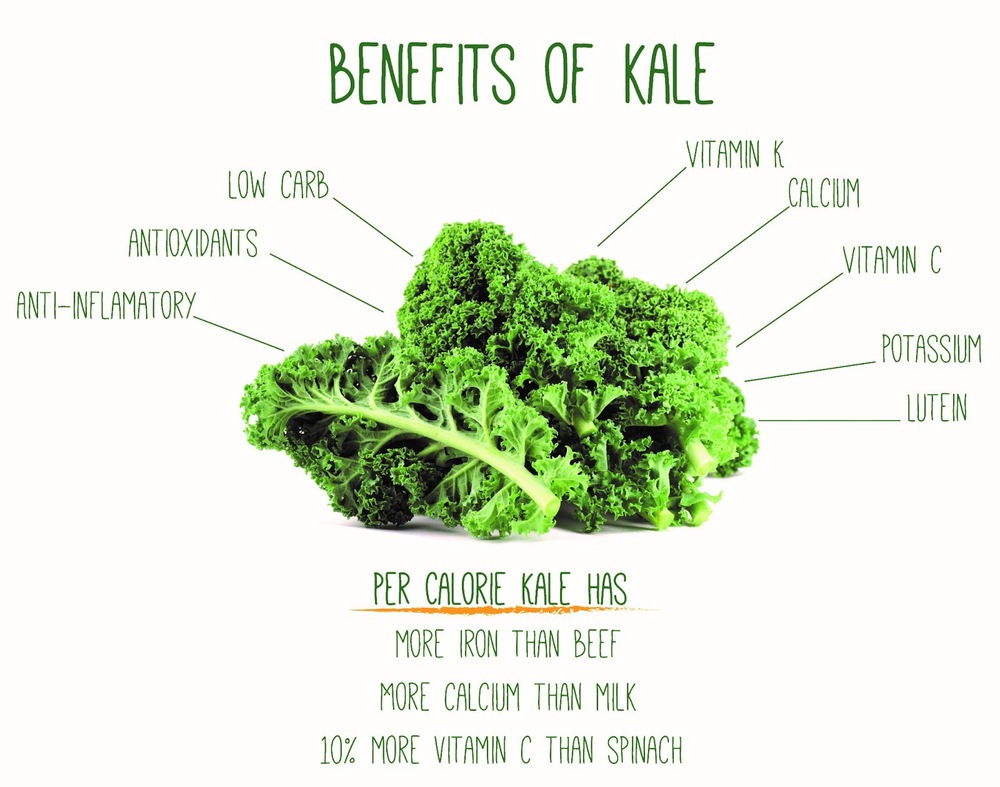 Common Varieties of Kale
Common Varieties of Kale
-
Curly Kale
Curly kale is the most commonly found type in grocery stores and vegetable markets. It’s easy to understand how its name is derived – the top of the green leaves curl over and create a kind-of ripple effect.Vibrant green in colour, this leafy variety sometimes shows a dark purple running through the leaves. It can have a slightly bitter taste, though usually only if the leaves are left to grow for a lengthier period of time. Curly kale is great for stir-fries, and can be steamed with lentils or to use in soups.
-
Dinosaur (Dino) Kale
Rather than curly in appearance, Dinosaur kale is actually wrinkled and is more green-blue in color. With thick stalks and long, narrow, leaves, most people claim that Dino kale’s taste is actually somewhat “nutty.” You will most often find it in soups, and it is commonly steamed or blanched in hot water or broth. Dino kale is also known at Black kale, Tuscan ale, or Lacinato kale.
-
Red Russian Kale
Red Russian kale is actually quite rare. Red and purplish in appearance, Red Russian has a sweeter taste than the other varieties of kale. Great for making chips, this kale variety is often used as a spinach substitute. Steamed lightly, the frilly leaves make an attractive garnish. If using it in soup, kale should only be added at the end to avoid overcooking.
-
Kale for joint health
Kale is loaded with vitamin K, beta carotene, folic acid, and calcium. It is low in saturated fat, and low in Cholesterol. Kale has even been shown to lower the risk of at least five different types of cancer. Studies have even shown that consuming kale has significant cardiovascular benefits. The high fibre content of kale interacts with bile acids in the liver to lower cholesterol levels.
 Kale is rich in several minerals and vitamins. These include iron, lutein, and calcium for the minerals and vitamins A, C and K about the vitamins. In comparison with broccoli, kales have ten times more the amount of lutein and an amazing seven times more the amount of beta-carotene. Kale is also rich in fibre that most people lack in their foods. The vegetable can be a good source of fibre especially for those who consume many-processed foods daily. To add beauty to it is that the kale contains chemicals that protect one from cancer. These chemicals include sulforaphane, phytochemicals, and indoles. The vegetable also contains the much important vitamin E that is why it is for Kale for joint health.
Kale is rich in several minerals and vitamins. These include iron, lutein, and calcium for the minerals and vitamins A, C and K about the vitamins. In comparison with broccoli, kales have ten times more the amount of lutein and an amazing seven times more the amount of beta-carotene. Kale is also rich in fibre that most people lack in their foods. The vegetable can be a good source of fibre especially for those who consume many-processed foods daily. To add beauty to it is that the kale contains chemicals that protect one from cancer. These chemicals include sulforaphane, phytochemicals, and indoles. The vegetable also contains the much important vitamin E that is why it is for Kale for joint health.
The sulforaphane found in the vegetable kale helps the enzymes that provide the body with detoxification. This helps in the clearing of carcinogenic substances in a timely fashion. The chewing of the kale or the chopping of kale is what leads to the production of the sulforaphane. It instigates the liver to produce enzymes that prevent cancer by detoxifying the chemicals. These are chemicals that we are exposed to on a daily basis. Sulforaphane has also shown the ability to reduce the proliferation of the breast cancer cells that is why it is Kale for joint health.
The beta-carotene content of kale helps maintain good vision. Vitamin A works hand in hand with beta-carotene to prevent the growth of cataracts. Vitamin C present in the kale, on the other hand, helps reduce the risks for colon cancer.